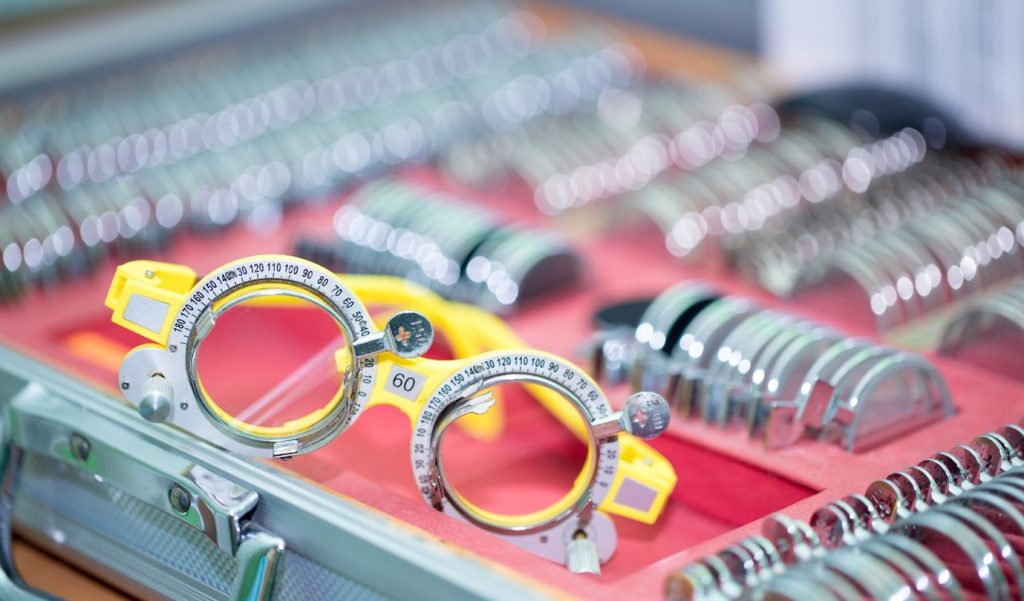The purchase of prescription eyeglasses with highly customized requirements can often be a daunting task. After eye exams, lens requirements, and several doctors’ appointments, one finally arrives at a diagnosis that may require a specific type of eyeglasses or corrective lenses. Corrective lenses are prescribed to patients in accordance with their conditions. These are often not simply restricted to dealing with distance and focus problems. Certain types of corrective lenses are also designed to cure conditions such as diplopia or astigmatism.

Since there are various types of eye conditions that can be treated by using the right kind of corrective lenses, ophthalmologists always prefer prescribing lenses instead of invasive surgery as the latter may be stressful and expensive for most patients. Eye conditions like diplopia are treated by eyeglasses that have prism correction within their lenses. It is a special design that is equipped to streamline the double vision problems and give you one cohesive image. The working of prism correction lenses is a testament to innovation and development in eye care. So, let us take a look at prism correction and how it works in eyeglasses.
What is Prism Correction?
The fundamental property of a prism is to bend light. Most prescription lenses are made from prisms according to the requirements of the wearer’s eye condition. The conditions are subsequently rectified by the lenses where the light is bent to the right position within the eye for a clearer image. Prism correction is essentially a property of all prescription lenses that require bending light for proper visual acuity.
Patients who suffer from double vision or diplopia are often prescribed lenses that have prism correction. Double vision is generally caused by a condition called strabismus where one or more of the muscles that connect to the eye fails to pull the eye. This lapse in muscle movement can cause the patient to see double images as the eye has failed to converge the images being perceived. This double vision can cause a recurrent tendency to squint, eye strain, lack of depth perception, and more. The failure in image convergence is often treated by ophthalmologists who prescribe corrective lenses for prism correction. Keep reading ahead to see how it works.
What is Prism Correction for Eyeglasses?
Since prisms are responsible for redirecting light from one direction to another, glasses with prism correction use that property to converge the perceived images for someone with double vision. Within a lens with prism correction, the prisms are placed at certain corrective angles with specific powers that can make up for the convergence error. After a thorough eye exam, the doctor will note the required power and amount of correction needed by your eyes for the corrective eyeglasses with prism correction.
Prism correction eyeglasses can be prescribed to you if you are suffering from double vision caused by eye muscle problems like strabismus, Grave’s disease, myasthenia gravis, etc. One must note that double vision can also be caused by neurological problems caused by strokes, migraines, and tumours. Nerve-related problems such as Diabetes mellitus and Multiple Sclerosis can also lead to double vision.
What does a Prism Correction Prescription Consist Of?
Since the misalignment of the eyes is the defining factor of double vision in patients requiring prism correction, diopters are used to measure the amount of prism correction needed. Like regular eyeglasses, readings like 0.5PD, 1.0PD, 1.5PD, and more are taken by ophthalmologists while prescribing.
The placement of the prism within the corrective lenses is determined by the extent of the double vision. It can be placed horizontally, vertically on one side, or on both sides of the prism correction lenses. On a prescription, the base of the prism required is noted to show the direction in which the light will be redirected. It is noted as Base Out or BO for placement in the outer edge of the lens, Base In or BI for placement near the inner edge, Base Up for top, and Base Down for the bottom edge.
Double vision and convergence errors can be difficult conditions to fix but with being equipped with the right corrective lenses, one can see the way they are meant to be. Prism correction can be vital to the steps towards better visual acuity, and one should see a doctor the moment they experience any of the symptoms.


